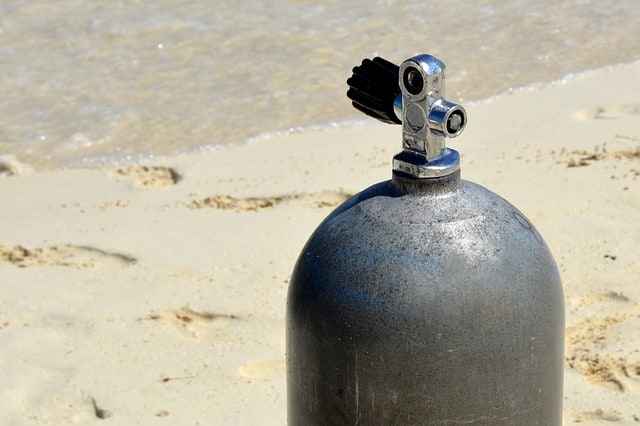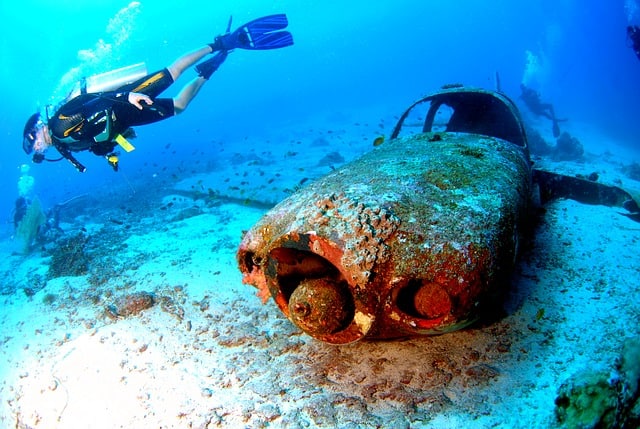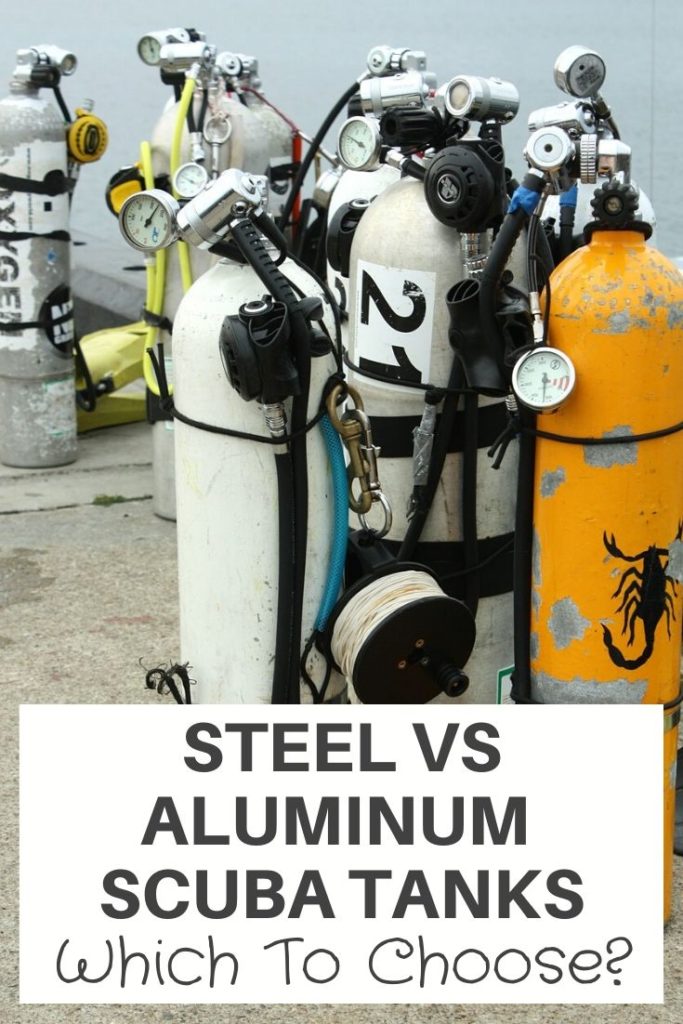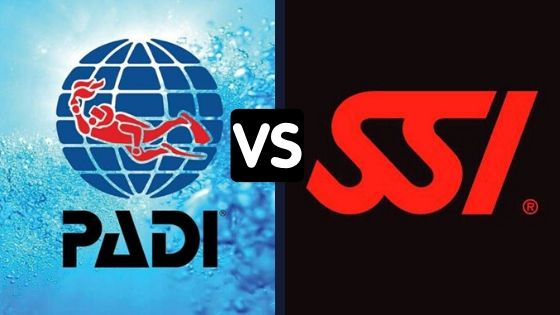
In the big scheme of things, you may not really care about the material that made the scuba tank you are using. For most divers, it is not a major consideration as they rent the scuba tanks from the dive shop and are not interested in buying their own scuba tank.
But of course, as a diver, it is not a bad thing to known the difference between steel and aluminum scuba tanks because this equipment plays a very important part when you are scuba diving.
Whether you are buying or renting scuba tanks, dive shops may offer you different types of tanks. To get a better understanding of what the best option is for you, it is better if you understand the type of material that will fit with your specific diving needs.
In this post, we will go through the differences between a steel vs aluminum scuba tanks. Let’s get started!
Read more on common questions asked by divers
What Is The Difference Between Steel vs Aluminum Scuba Tanks?
Steel and aluminum scuba tanks are the most common type of materials used for diving cylinders and scuba tanks. We will look at the differences between these materials by looking at their core properties.
Weight Of The Scuba Tanks
The overall comfort when you are diving can depend a lot on the size and the weight of your scuba tanks. Therefore, you need to beware of the dry weight of the scuba tanks. The dry weight itself is a measurement of the scuba tanks weigh when they are on the land.
The core properties of steel are its high durability and stronger than the aluminum. Therefore, the scuba tanks made from aluminum material will be heavier than the ones made from steel.
This is because the scuba tanks from aluminum need to be thicker so that the tensile strength will be stronger.

The Size Of The Tank
If you have a smaller built, then it is better if you choose the tanks that have small cylinders. Although using a much bigger scuba tank might not harm you when you are underwater, but it sure will annoy you sometimes. Your legs or head may hit the tank when you are diving.
Steel tanks are mostly quite smaller than that of aluminum tanks. The diameter for both of these materials commonly 7.25 inches while the height will mostly around 20 until 30 inches.
The Capacity
The pressure rating and the size of the scuba tanks will determine the capacity. Capacity for most of the scuba tanks are ranging from 50 until 120 cf. The air pressures will vary from 2400 until 2650 psi for low-pressure (LP), 3000 psi for standard pressure, and 3300 until 3500 psi for high pressure (HP).
The ideal option for divers that prefer scuba tanks with higher pressure is steel. To achieve the same pressure, scuba tanks that made of aluminum need a thicker wall in order to safely contain the gas inside.

Durability
Aluminum material is not as durability when compared to steel material. The tank neck is easier to crack, dent or scratch.
Buoyant
The scuba tanks can affect neutrally buoyant, where steel has a negative effect and stays negative during your dive. Whereas Aluminium tanks tend to start negative and turn positive when the air is been used.
Wrapping Up
Finally, the steel scuba tanks offer better capacity, better durability and are a smaller size. Meanwhile, if you want to choose the more economical, then aluminum can be the best option for you.
And that’s it for now! I’d love to know if this guide on steel vs aluminum scuba tanks has helped you. Let me know if you have any questions and let me know if there is more to add.
Did you enjoy this post? Then don’t forget to pin it!











